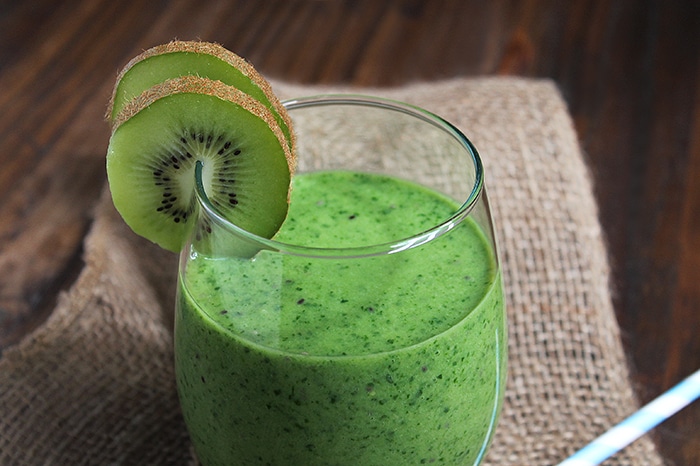
Vitamin D Benefits: The Facts- Everything You Need To Know
Vitamin D benefits carry a long list. It is an essential vitamin to carry in your body and it’s important that you don’t have a vitamin D deficiency.
Vitamin D is probably most well known for being the “sunshine vitamin.” The ultraviolet rays from the sunlight strike the skin, causing vitamin D to be made. It can also be found in food and supplements. This is one of the four fat-soluble vitamins. That means that it’s stored in the body’s fatty tissue and can build up to toxic levels with excessive consumption.
The major function of vitamin D is to maintain optimal blood levels of calcium and phosphorus. Studies have shown that it provides protection from hypertension, cancer, osteoporosis, type 1 diabetes, and several autoimmune diseases.
Table of Contents
- Fact #1 – How much vitamin D do I need to consume?
- Fact #2 – What are sources of vitamin D?
- Fact #3 – Do I need to take a vitamin D supplement?
- Fact #4 – Vitamin D3 is the ideal choice for these reasons:
- Fact #5 – What happens if I don’t have enough vitamin D?
- There are several other factors that can contribute to a deficiency in vitamin D:
- Vitamin D Fact #6 – Are there any dangers to consuming too much vitamin D?
Fact #1 – How much vitamin D do I need to consume?
The recommendations for vitamin D are listed as an Adequate Intake in micrograms (mcg) and International Units (IU):
Age Vitamin D Birth to 13 years 5 mcg (200 IU) 14 to 18 years 5 mcg (200 IU) 19 to 50 years 5 mcg (200 IU) …
Fact #2 – What are sources of vitamin D?
The sunshine vitamin got its name from the fact that the sun helps our body produce vitamin D. The concern about skin cancer has caused many people to avoid unprotected exposure to the sun. Fortunately, it is possible to consume enough vitamin D in your diet, so it is not necessary to risk the dangers of skin cancer by exposing yourself to the sun.
For those who do rely on the sun on as one of their sources, there are many factors that will impact how much you need. The season, time of day, cloud coverage, smog, amount and SPF of sunscreen, geographic latitude, and melanin content of your skin are all possible barriers. It can take anywhere from five to 30 minutes of sun on unexposed skin between the hours of 10 a.m. and 3 p.m. at least twice a week.
The foods that naturally contain vitamin D are seafood, mushrooms, and egg yolks. Dietary sources of vitamin D are:
Food Amount Vitamin D Content:
- Bluefish 3 oz 415 IU
- Catfish 3 oz 425 IU
- Cod liver oil 1 teaspoon 450 IU
- Egg yolk 1 whole 25 IU
- Mackerel 3 oz 395 IU
- Milk, vitamin D fortified 1 cup 100 IU
- Mushrooms, Chanterelle 2 oz 50 IU
- Mushrooms, Shitake 2 oz 55 IU Oysters 3 oz 545 IU
- Salmon, farmed 3 oz 275 IU
- Salmon, wild 3 oz 1,000 IU
- Sardines, canned in oil 1 ¾ oz 230 IU
- Shrimp 3 oz 120 IU
- Tuna, bluefin 3 oz 170 IU
- Tuna, canned in water 3 oz 135 IU
Fact #3 – Do I need to take a vitamin D supplement?
When diet is not enough, you may need to take a supplement to help you reach the desired intake of vitamin D. As you will see, vitamin D can be toxic at high levels, so the goal is to reach the appropriate level, not exceed it. The two primary types of vitamin D supplements are vitamin D2 (ergocalciferol) and vitamin D3 (cholecalciferol). Most experts believe that vitamin
Fact #4 – Vitamin D3 is the ideal choice for these reasons:
Vitamin D3 is the most potent form, it’s more stable on the shelf, and it’s less toxic than D2.
Vitamin D3 is the one that is synthesized when the sun hits your skin, so it’s considered to be the most natural.
Most of the research that has been done on vitamin D and its health benefits has used vitamin D3.
Fact #5 – What happens if I don’t have enough vitamin D?
You can have blood tests done to determine if you are deficient in vitamin D. Your 25(OH)D level will be measured. Most experts agree that a 25(OH)D level of <20 ng/mL is considered to be vitamin D deficiency, whereas a 25(OH)D level of 21-29 ng/mL is considered to be insufficient.
Research has shown strong relationships between lower rates of chronic diseases and higher levels of vitamin D. The most well-known disease related to vitamin D deficiency is rickets. Rickets is a disease that was found to be cured by consuming cod liver oil in the early 20th century. Rickets causes soft, weak bones in children, resulting in skeletal deformities (bowed legs), impaired growth, bone pain, dental problems, and fragile bones. Unfortunately, rickets has still been seen in children not being fed an adequate amount of vitamin D. In adults, vitamin D deficiency can lead to osteoporosis and osteomalacia (both are conditions of weakened bones).
There are several other factors that can contribute to a deficiency in vitamin D:
Age
People over 50 years old have a decreased ability to synthesize and absorb vitamin D. This occurs regardless of the amount of sun exposure time.
Medical conditions
Vitamin D requires fat for absorption, so anyone with a medical condition that reduces the ability to absorb dietary fat can be at risk for a deficiency. It is important to have vitamin D levels monitored in people with conditions such as Crohn’s disease, celiac disease, cystic fibrosis, pancreatic enzyme deficiency, and surgical removal of any part of the stomach or intestines.
Obesity
Research has shown lower vitamin D concentrations in overweight and obese individuals. One possible reason for this is that vitamin D gets absorbed by fat tissue and is not easily absorbed in the bloodstream.
Sun exposure
The ultraviolet rays from the sun have served as a source of vitamin D over the years. Due to the danger of skin cancer, many people have cut back on their exposure to the sun and have begun using sunscreen when they are being exposed, so this can contribute to lower levels if adjustments are not made to compensate for this loss via dietary sources and/or supplements.
Skin pigmentation
There is more melanin in darker-skinned individuals. Melanin blocks the ultraviolet rays and interferes with vitamin D synthesis.
Vitamin D Fact #6 – Are there any dangers to consuming too much vitamin D?
Consuming an excessive amount of vitamin D can pose health problems. This is most likely to occur from taking supplements or high doses of cod liver oil. There is no danger of vitamin D toxicity from sun exposure. Symptoms of toxicity can be nausea, poor appetite, weakness, weight loss, constipation, and high blood levels of calcium. A blood level of over 200 ng/mL for vitamin D, measured as 25(OH)D, can be potentially toxic. For this reason, the tolerable upper intake (UL) for vitamin D has been set at 2,000 IU (50 mcg) per day for ages 1 and above. The UL for birth to 12 months is 1,000 IU (25 mcg) per day.
The important nutrients, foods also contain non-nutrient that can affect your body. These include fiber and phytochemicals (found in plants), many of which are protective against disease. Some of these compounds act as antioxidants, which protect the body’s cells from damage.
Healthy foods can help you prevent and treat disease. Eating more fruits and vegetables can help lower blood pressure and may lower your risk of lung, oral, esophageal, stomach, and colon cancer. Eating less saturated fat may also lower your risk for cancer and heart disease.






